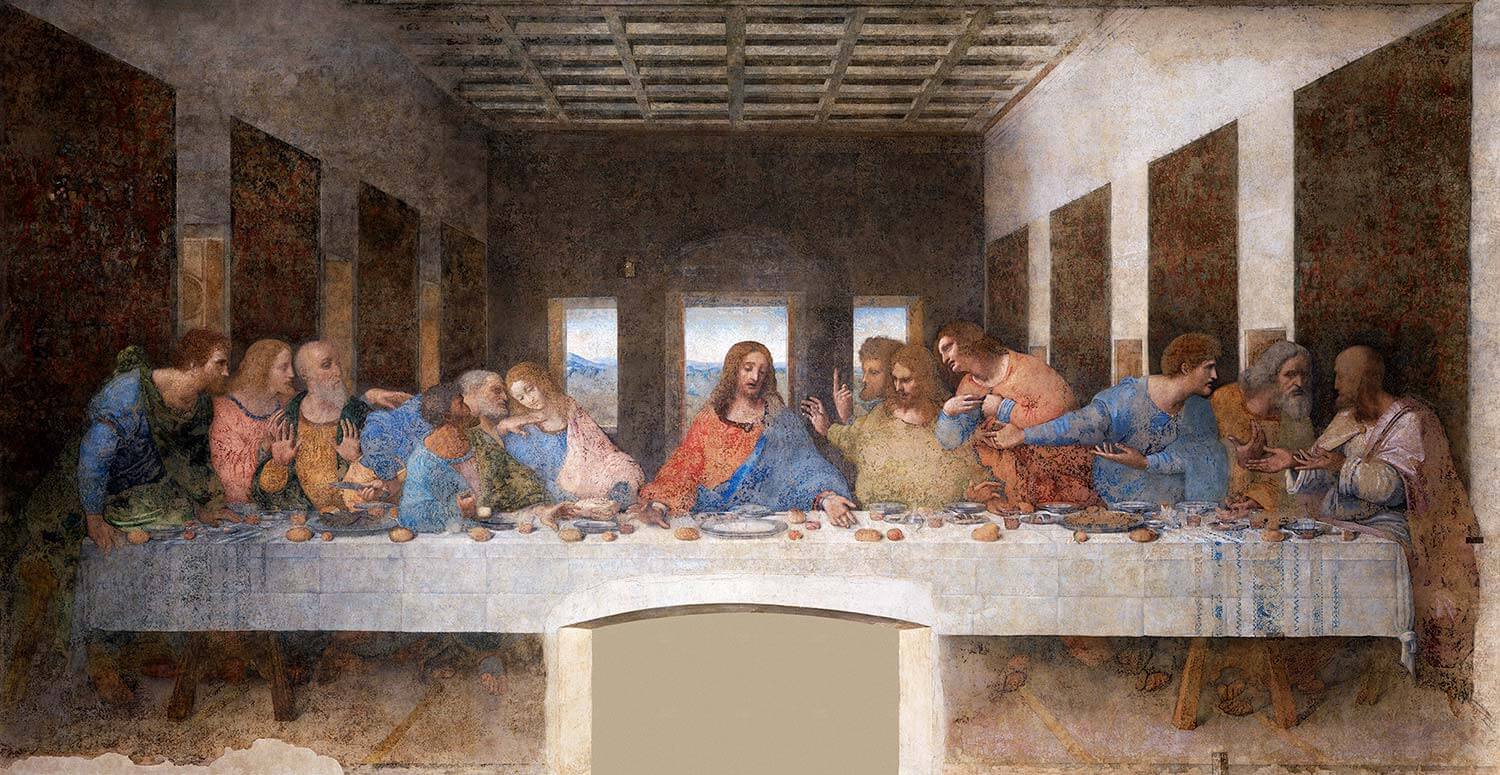
Why is Leonardo Da Vinci The Last Supper so important?
The Last Supper is a painting by Leonardo da Vinci that is considered one of the most famous and important works of art in the world. It depicts the moment in the Bible when Jesus tells his disciples that one of them will betray him. The painting is significant for its use of perspective, the emotional expressions of the figures, and the symbolism present in the scene. It is also a masterpiece of the Italian Renaissance and considered as one of the greatest works of art of all time. It's also famous for its technique of painting, which is known as 'sfumato' which means to paint in a hazy or blurred manner. It has been studied by many art historians and continues to be a popular subject for analysis and interpretation.
What is the story behind The Last Supper painting?
The Last Supper is a painting that depicts the moment in the Bible when Jesus tells his disciples that one of them will betray him. The scene is taken from the Gospel of John, chapter 13, in which Jesus is having a meal with his disciples and tells them that one of them will betray him. The painting depicts the disciples' reactions to this news, and the tension and drama of the moment is captured through the use of expressive gestures and facial expressions.
The painting was commissioned by Ludovico Sforza, the Duke of Milan, for the Dominican monastery Santa Maria delle Grazie in Milan, Italy. Leonardo da Vinci began work on the painting in 1495 and completed it in 1498. The painting was placed in the refectory of the monastery, where it was intended to be a visual reminder for the monks of the Last Supper of Jesus and his disciples.
The painting has undergone significant restoration over the years and has been damaged by vandalism, pollution and humidity. In recent years, an ongoing restoration process is carried out to preserve the painting.
The Last Supper is considered one of the most famous and important works of art in the world, it is a masterpiece of the Italian Renaissance and an important representation of the life and teachings of Jesus Christ in art history.
Who is the woman in the Last Supper?
In Leonardo da Vinci's painting The Last Supper, there is no clear representation of a woman. The painting depicts the moment in the Bible when Jesus tells his disciples that one of them will betray him, and it shows the twelve apostles present at the scene. The painting is focused on the reactions of the male disciples present, and there is no figure that can be definitively identified as a woman. It is important to note that the Last Supper is a sacred event that took place between Jesus and his 12 apostles, all of them were men. It is unlikely that a woman would have been present at this event.
It is worth noting that over the centuries, some people have speculated that there may be a representation of a woman in the painting, usually pointing out to one of the figures in the background or by one of the disciples. However, these theories are not widely accepted by art historians, and there is no evidence to suggest that Leonardo included a woman in the painting.
Why did it take 3 years to paint the Last Supper?
What was Leonardo trying to say with the Last Supper?
One of the main themes of the painting is betrayal, as it portrays the moment when Jesus reveals to his disciples that one of them will betray him. The painting also captures the tension and drama of the moment, as the disciples react with shock and dismay to the news.
Another theme of the painting is unity and fraternity, as it shows the bond and camaraderie of the group, who are gathered together at the table. The painting also illustrates the idea of continuity, as the apostles, who will continue the mission of Jesus after his death, are depicted in a unified and harmonious way.
The painting is also believed to have a deeper symbolic meaning. The gestures and expressions of the disciples in the painting are believed to represent different virtues and vices, and the positioning of the figures is thought to have symbolic significance. For example, the figure of Judas, who is traditionally depicted as the betrayer, is often shown sitting on the side of the painting opposite from Jesus, suggesting a separation from the rest of the group and from Jesus himself.
It is also believed that the painting was intended to be a visual reminder for the monks of the Last Supper of Jesus and his disciples, a reminder of the sacrifice of Jesus for the salvation of mankind and a call to the monks to follow Jesus's example of humility and self-sacrifice.
Overall, The Last Supper is a powerful and complex painting that can be interpreted in many different ways, but ultimately it is a representation of a sacred event in Christian faith and Leonardo's interpretation of it.
What was the IQ of Leonardo da Vinci?
There are no records of Leonardo da Vinci having ever taken an IQ test, so it is impossible to know his exact IQ score. However, he is widely considered to have been a genius and one of the most intelligent people in history.
Leonardo da Vinci was a polymath, meaning he had a wide range of knowledge and talents in many different areas. He was an artist, scientist, inventor, architect, musician, and writer. He made significant contributions to the fields of painting, sculpture, architecture, anatomy, engineering, and many more. He was also known for his curiosity and for being a keen observer of the natural world.
In modern times, IQ tests are considered to be a measure of a person's cognitive abilities, but it is not the only measure of intelligence, and it is not the only measure of a person's worth or potential. Leonardo da Vinci's legacy and impact on history and art is undeniable, and it is clear that he was an extraordinary person and one of the most renowned figures of the Renaissance period.
Why is The Last Supper so damaged?
The Last Supper, painted by Leonardo da Vinci in the late 15th century, is considered one of the most famous and important works of art in the world. However, it has also been subjected to significant damage over the centuries.
One of the main reasons for the damage is the technique used to create the painting. Leonardo used a new technique known as "tempera and oil on gesso, pitch, and mastic" which was not as durable as fresco technique. As a result, the painting began to deteriorate soon after it was completed, and over time, the paint began to flake and peel.
Another reason is the painting's location, it was placed in a refectory of a monastery, which meant that it was exposed to light, heat, and humidity, which further accelerated the deterioration of the painting.
Additionally, the painting has been damaged by various incidents, such as vandalism, accidental damage, and improper restoration attempts. It was vandalized twice, once in the 16th century and another time in the 19th century, both times causing significant damage to the painting.
Furthermore, the painting was also affected by the bombing of the monastery during World War II which caused more damage to the painting.
As a result of all these factors, the painting is now in a poor condition, and it requires constant maintenance and preservation efforts in order to preserve it for future generations.
Nowadays, an ongoing restoration process is carried out to preserve the painting but despite all efforts, it is unlikely that the painting will ever be returned to its original condition.




